
 |
|||
| Sponsors websites: | |||
What's new in pavers?By Todd Layt
First glance says there’s not a lot new, but delve deeper and manufactures just keep launching new sizes, colours, textures, new materials, and lately more environmental pavers. Compared to 10 years ago, landscapers are spoilt with choice when it comes to pavers; that’s the problem and the benefit all in one. Choice. There are so many choices when it comes to pavers, it is harder to choose. You need to do more research to find what’s available. Hopefully this article will give a quick tour of some of the newer items to hit the market in the last five years. Large format pavers became very popular in the last 10 years. We, until recently, had very good economic times. These large format pavers exude affluence making them the paver of choice for people enjoying a well to do life style. Now there are even pavers as large as 600mm x 600mm, some of them like Timbercrete, which uses wood waste as a reinforcement, only weigh as much as a concrete 400 x 400mm paver. Many are using natural stone products that measure up to 500mm x 1metre. These larger pavers make small areas look bigger, so even the recession will not stop people using these. Competition has kept prices in this form of paver keen. The choice in size and various shapes of pavers has lead to a real artistry of designing with pavers. Whether it be the use of plants and gravel between large format pavers, or the array of laying patterns used in both small and large pavers, landscapers are showing their creative streak. The choice in colours has become much wider. As Dean Boon said in an article in the last issue of Landscape Contractor magazine, ‘If you haven’t noticed the trend towards charcoal pavers… than you have been living under a rock.’ These are simply easier to keep looking clean, although they are a little hotter in the sun. However, light natural colours are still popular, with the French rustic cream colours taking over from the Tuscan terracotta colours. These days choosing pavers is almost like choosing paint, with suppliers keen to show off their colour pallets. Choice when it comes to texture is amazing. From smooth granite feel, to the rougher textures, the choice is huge. Permeable pavers have been around for a while, but with a renewed push to be more environmental, more people are using these due to choice or of late due to regulation. It seems to becoming more common for councils to require the use of permeable pavers. Is this a future trend? Richard Martin from Adbri Masonry thinks so. He said ‘It has increased three fold in the last 10 years, and I expect bigger growth in the next decade. These pavers allow water to infiltrate at a rate of 600ml per square metre.’ Councils particularly are getting behind permeable pavers, and any type of water sensitive design. As a plant and turf enthusiast I see this as a great way to allow ground water to get into the surrounding vegetation, and a good thing for the storm water. It is well known hard paving surfaces that do not allow water infiltration increases the amount of pollution getting into the storm water system. The pollutants that gather over time on the surfaces are washed into storm water, rivers and creeks. Non permeable surfaces also stretch our urban drainage systems in peek rain events. More permeable systems help reduce these problems. Many suppliers have not come to grips with this future trend, but Adbri Masonry lead the way in this system of pavers. A quick walk around the Sydney Olympic site at Homebush will show 15 000 square metres environmental permeable pavers at their best. The good news is this technology is now easy to get, even for the humble backyard paved area. A quick visit to www.adbrimasonry.com.au will give you the idea. Adbri masonry only do the smaller pavers allowing the gaps to drain the water, but there are now other companies offering 300mm x 300mm porous pavers, with other companies now looking at making larger porous pavers. These porous pavers allow water to go straight through the paver at a rate of 272 ml per minute per square metre. They are made using concrete with very few fines. They come in a variety of colours. The product is called HydroSTON, and can be seen at www.hydrocon.com.au For vehicle traffic areas the smaller pavers are recommended in this system. PermaPave is another product that lets water through. But this is different. It is basically a paver that has little rocks joined together by a binder that is 8 times the strength of concrete, and has one third of its mass as air. The water flows through at an amazing rate of 45.5 litres per second per square metre. That’s crazy. This has big implications for development. Legislation is now being passed in many countries including Australia that limits the amount of non permeable surfaces. This for example will allow developments to have large car parks that still meet this legislation. Some people may think the texture is too course but really it does not look bad at all when viewed on mass, in fact it looks relatively smooth. www.permapave.com.au Atlantis Corporation have innovative new heavy traffic plastic pavers called Flo-Grid that actually collect water runoff and send it to onsite water storage facilities or into the ground. They also have plastic pavers that can be filled with gravel called Gravel cell. Turf Cell which is another plastic paver can be covered with Grass. Couple these pavers with their revolutionary onsite water retention system and you have innovative products that help solve our Australian water supply problems. www.porous-paving.com.au or www.atlantiscorp.com.au Grass pavers have been around for years both in concrete and plastic. They have a lot of benefits, not just in allowing water to permeate into the ground. The grass cools the surrounds, takes in carbon, and provides all the other health benefits that come with a real lawn. The main problem with these products is how the turf is installed. Lots of money is spent on the grass paver and little on the turf. Seed will not work in Australia, except maybe Tasmania, as we need warm season turf types. The best way to install the grass would be to get grass stolons and mix it with the soil then spread it over top. With the plastic pavers you can prepare the area then roll out the turf on top, and use a heavy roller to compact it into the plastic paver. You can buy TurfPave XD for $27.95 from Elmich. www.elmich.com.au The best grasses to use are vigorous grasses with good underground rhizomes. The older common Kikuyu types have poor underground rhizomes, but new types like Kenda Kikuyu have 4 times as many Rhizomes making it an excellent choice. Couch types and Empire Zoysia also have good rhizomes making these grasses a good choice. Buffalo does not have Rhizomes, so it is not a good choice for grass pavers. Small concrete and clay pavers are still the most popular for drive ways and traffic areas. At the end of the day the paver itself has to have the strength to carry the load, and on porous bases this means the smaller pavers have a big advantage. The Sydney Stone Company www.sydneystone.com.au said that the use of Cobble stone is still very strong for drive ways. The demand for flamed loose cobble in light or dark grey has been strong. The flamed finish which is basically like using a blow torch on the smooth cut cobble pavers keeps the smooth look, but provides a less slippery surface. However, they also said the easier to lay man made cobble pavers that are strung together are still popular. A new feature of pool paving is the straight edge instead of the bull nosed edge around pools. This seems to becoming more popular in both natural stone and manmade pavers. Baines Masonry have great low cost concrete brick style pavers that have a new Darapel silicon additive that provide much improved water proofing, and greater longevity when it comes to holding its colour over the years ahead. Their Eco Pave product is only $16.20 per square metre, and their vehicle traffic pavers called Metric Paver are 200mm x 100mm x 60mm are only $35 including GST. Baines Masonry will custom make these for you in various finishes should the standard ones not meet your needs. With the recession, Baines have found these new low cost pavers really popular. www.bainesmasonry.com.au Custom pavers and custom bull nosing for pools is another new growth area. There are not currently a lot of manufactures offering this, but it is growing. iPave according to David Carter, are finding more and more of its business coming from custom manufacture. Intricate pool and spa designs call for specialised borders, and iPave will custom make bull nosed finishes that greatly reduce the number of joins needed. iPave believe it is the new way they are manufacturing that makes these smaller run custom jobs viable. They are also doing a lot of large paving projects where the designers actually design a custom type paver and then have them made for the project. iPave now use many new aggregates in their pavers, and this combined with a shot blast finish allows them to cut pavers how people want them, basically no longer being a slave to the concrete moulds. The coarse sands and cement, coupled with the shot blast of steel pellets also provides more realistic natural stone looking finishes. David explained the recession has hit the paving industry, with lower volumes, and Landscapers are looking for better deals, and selling at good prices is helping them. www.ipave.com.au Other new processes are being used to make pavers. Some companies are adding fibre to pavers for added strength. One company has taken this to the extreme to manufacture a very light weight strong paver. Timbercrete have manufacturers Australia wide making pavers out of cement and waste wood. These white ant proof Timbercrete pavers weigh less than half the weight of Concrete, yet are amazingly strong. They have a 600mm x 600mm x 60mm paver that is easy for one man to lay. It’s not only the weight that makes them different, but the fact that on a 40 degree day, Timbercrete pavers are 18 degrees cooler than concrete, making them ideal for around homes and pools where people walk bare feet. It also keeps house surrounds cooler. www.timbercrete.com.au It’s amazing when you look into a commonly used product like pavers, just how many new products are out there. Paving landscapers have never had it better; so much to choose from, and keen competition from suppliers keeping prices down. |
|||||
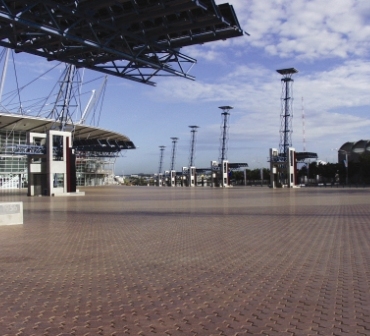 |
|||||
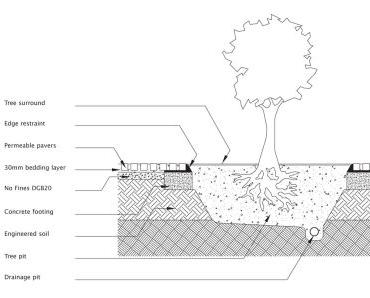 |
|||||
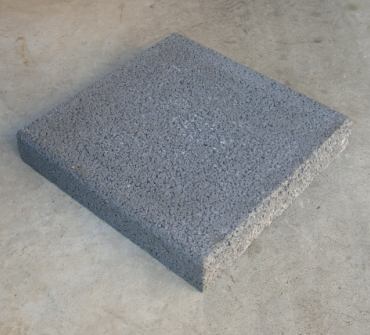 |
|||||
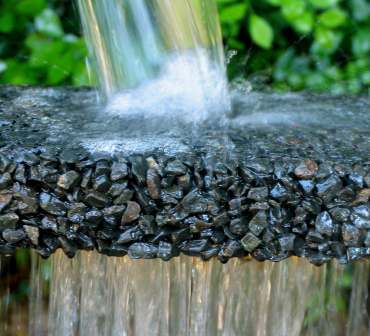 |
|||||
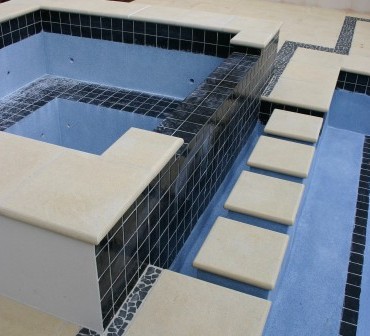 |
|||||
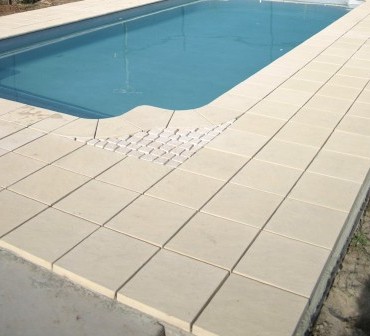 |
|||||
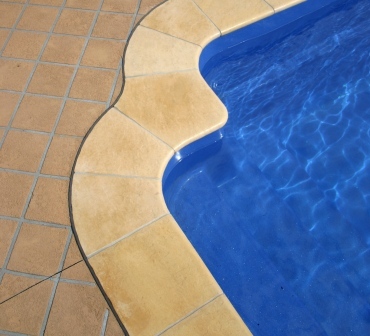 |
|||||
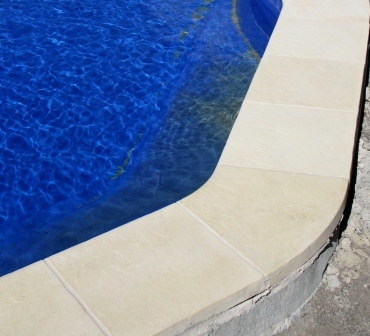 |
|||||